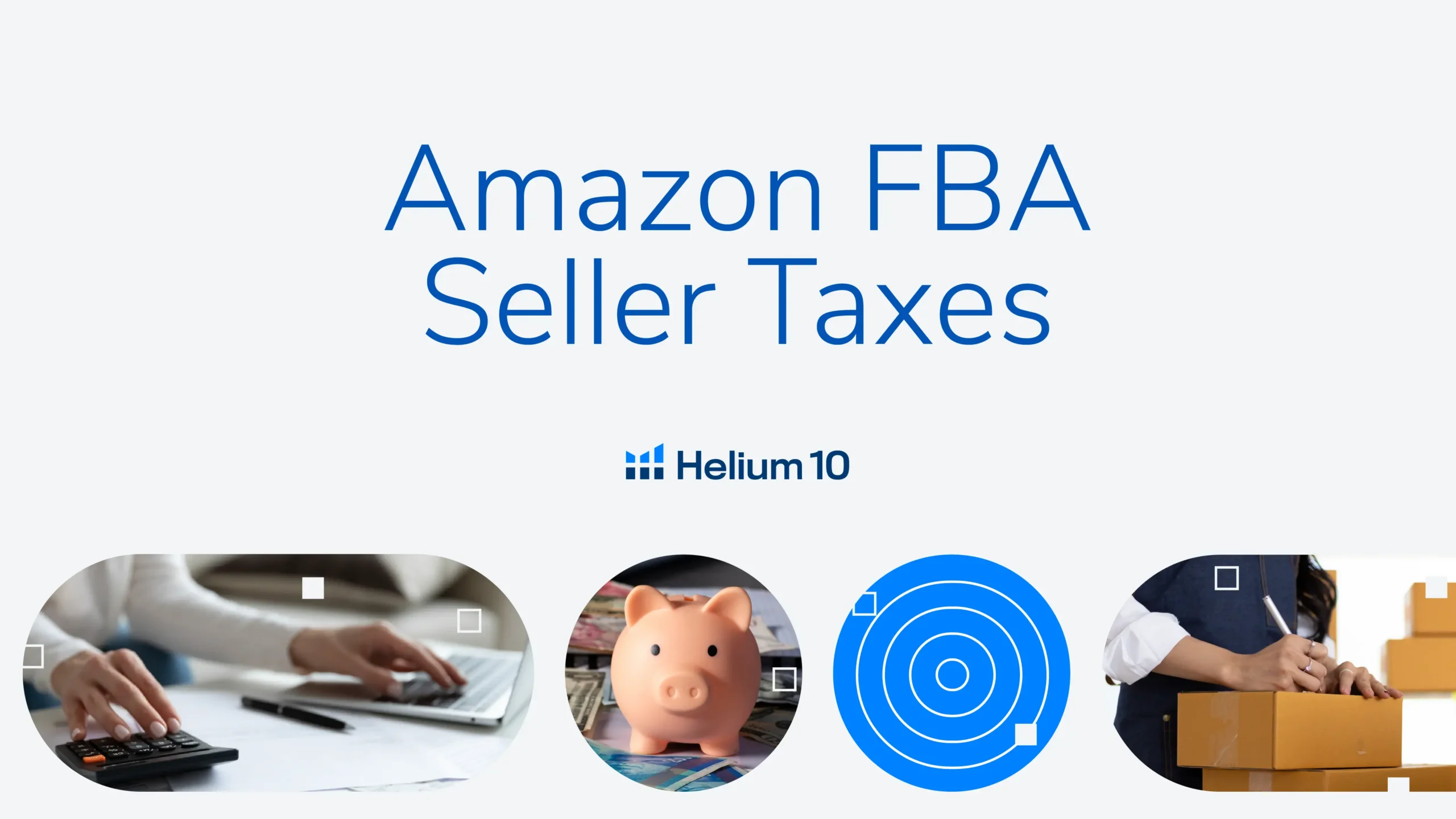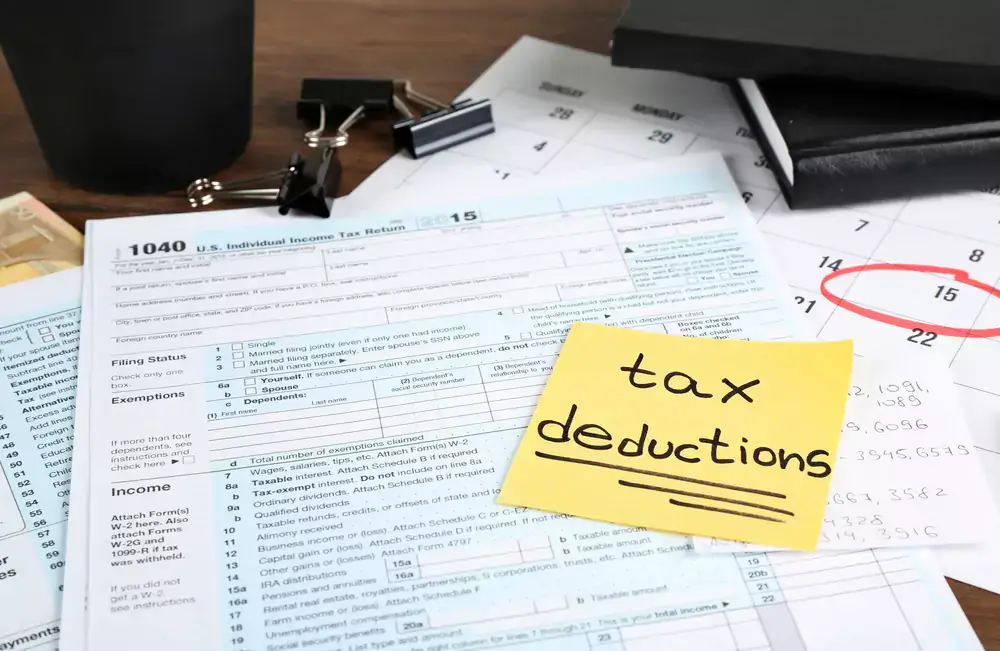
Amazon FBA Seller Taxes: 11 Tips to Make Life Easier


Table of Contents
- Introduction
- 1. Understand Your Business Structure
- Sole Proprietorship
- General Partnership
- C and S Corporations
- Limited Liability Company (LLC)
- 2. Keep Accurate Records
- 3. Gather Income Information
- Sales Tax
- 1099-K Tax Form
- 4. Document Expenses
- 5. Separate Personal & Business Expenses
- 6. Calculate Cost of Goods Sold (COGS)
- 7. File Schedule C (Form 1040) In Certain Cases
- 8. Factor In Sales Tax
- 9. Review Tax Deductions and Credits Thoroughly
- 10. Pay Estimated Taxes on a Quarterly Basis
- 11. Consult With a Tax Professional
- Conclusion
Introduction
One of the most popular sites for starting a brand new business, Amazon has over 100,000 new Amazon storefronts and businesses on its site per year. Unfortunately, not all of those businesses make it to the new year, and a common reason why some of them fail is because they have poor Amazon bookkeeping practices.
By taking the time to properly manage income, expenses, cash flow, and other vitally important financial information, you can help ensure that your business will last for years to come.
Another bit of good news is that you don’t need to be a genius at Amazon bookkeeping to run an effective and long-lasting business. You just need to take the time to learn the basics of Amazon FBA seller taxes and how to track your money.
Take a look at these 11 tips below to learn how to reduce stress when it comes to your business while making your life — both inside and outside of work — much easier.
Outclass Your Competitors
Achieve More Results in Less Time
Maximize your results and drive success faster with Helium 10’s full suite of Amazon and Walmart solutions.
Sign Up for Free1. Understand Your Business Structure
While learning how to start an Amazon business, it is highly important to carefully plan out and consider the different business entities, each with its own distinct benefits. The business entities you can choose from are:
Sole Proprietorship
The most common type of business entity for those selling on Amazon, a sole proprietorship is easy to establish. On the plus side, it doesn’t require a massive financial investment at the start.
Another great thing about having a sole proprietorship business entity is that you can benefit from pass-through taxation. This means that you won’t have to pay taxes on the entity level, which is a massive plus to this structure.
Additionally, both new and old business owners who want to directly oversee their entire operation will quickly fall in love with the unique sole proprietorship legal structure. However, this simple and easy-to-understand method of doing business can quickly go awry due to the potentially unlimited liabilities the business may incur.
Thankfully, by making use of insurance and contracts, you can work to counteract or outright avoid liability risks. With a low amount of paperwork involved paired with low set-up costs, a sole proprietorship business structure is ideal for many first-time Amazon sellers.
General Partnership
Often referred to as an upgraded form of a sole proprietorship, a general partnership occurs when two or more individuals own the business and share profits, assets, and any required financial/legal duties. Specifically, the partnership consists of partly owning percentages, management rights, profit loss and profit sharing, and more.
Similar to a sole proprietorship, a general partnership requires that all partners be jointly liable for any and all liabilities the Amazon business may incur. From a taxation standpoint, a general partnership is first and foremost a tax-reporting entity. This means that all owners are required to file an annual information return to the IRS. Using this business structure, each owner benefits from pass-through taxation (again, similar to a sole proprietorship), ultimately leading to reduced tax obligations.
C and S Corporations
The most complex out of all the business structures, corporations are independent from their business owners — shareholders, in this instance. Instead, these shareholders come together and elect a board of directors that oversees all the important day-to-day business operations. Most large companies prefer corporations due to limited personal liability, business security, and easy access to capital.
To be specific, the two types of corporations are:
- C-Corporation: Recognized as a separate taxable entity, a C-Corp pays taxes on all its earnings while the shareholders pay taxes on dividends, leading to double taxation. The most appealing benefit to C-Corporations is the unlimited number of shareholders paired with zero restrictions on ownership. Additionally, anyone in the corp can own shares while issuing more than one stock class, regardless of whether they’re a U.S. citizen or not.
- S-Corporation: Similar to a C-Corp, an S-Corporation is owned by a group of shareholders. This pass-through legal entity files an informational federal return, however, corporate-level employees are not required to pay income taxes. The main advantages to this type of corporation include just a single layer of taxation instead of two, a pass-through of losses through the shareholders, and an appealing 20% deduction on business income.
Limited Liability Company (LLC)
A limited liability company (LLC for short), is an intricate mix of a sole proprietorship, a general partnership, and a corporation. An LLC is usually preferred by new and old Amazon FBA sellers due to the powerful pairing of flexible taxation and personal liability protection. Additionally, there can be one or more owners — or ‘members’ — of the LLC.
Similar to a sole proprietorship, an LLC qualifies for tax benefits. The reason for this is that the LLC business income is taxed as your personal income. Another thing to note is that your personal assets are protected by the LLC as well since the company provides all owners with limited liability. In the event that a customer sues your LLC (which you may discover after learning how to check Amazon messages), your personal assets will be completely protected; only your business assets will be at risk.
2. Keep Accurate Records
Maintaining accurate records is an important part of selling on Amazon since it helps sellers keep track of all their sales and expenses. This information is crucial when managing an Amazon business and can determine where sellers invest their limited resources. For example, should a seller invest in Amazon Chrome Extensions to help with keyword research, or should they focus on building one or more PPC campaigns? Neither choice would be possible if company records are not kept up-to-date. Additionally, above everything else, accurate bookkeeping will be necessary when it comes time to pay both state and federal taxes at the end of the year.
While there are a multitude of methods that new Amazon FBA sellers can use to keep accurate records, sellers commonly use software programs such as QuickBooks or FreshBooks, or choose to hire a professional bookkeeper who will keep track of their records.
Also, keep in mind that you shouldn’t until the end of the year to start your bookkeeping. Instead, you should chip away at this massive project on a monthly basis to easily stay on top of your sales numbers.
3. Gather Income Information
In the course of filing Amazon FBA taxes, you’ll need to have quick access to your sales figures as well as your 1099-K tax form.
Sales Tax
When selling items at either a retail establishment or through your personal website, you’ll be required to collect and remit sales tax on each of those items. Most of these point-of-sale systems will already have these tax amounts built in, but you can always use a sales tax or Amazon FBA calculator to make doubly sure that you’re charging the correct amount.
1099-K Tax Form
The 1099-K form, in short, is a sales reporting form that gives the IRS both your monthly and annual gross sales information. This tax form also includes important items such as the sales tax and shipping fees. However, if you’re an individual Amazon FBA seller, you won’t be required to fill out/complete a 1099-K tax form. Rather, Amazon will fill it out for you.
Additionally, Amazon will provide this 1099-K form to sellers and the IRS provided that they made more than $20,000 in unadjusted gross sales and had more than 200 transactions.
Keep in mind that Amazon sellers who made more than 50 transactions in that specific year will be required to also provide their tax information regardless of whether they met the above requirements or not. If they don’t provide this information, they will be at risk of losing their seller status which, for many sellers, would be disastrous.

4. Document Expenses
When preparing for tax season, you should focus on gathering and documenting your business expenses over the past year. According to the law, for a business expense to be deductible, it must be both ordinary and necessary to your business.
Ordinary business expenses: These are common expenses that many businesses face in the course of ordinary operations. In simple terms, these expenses are ones that any tax experts will see as entirely reasonable.
Necessary business expenses: These business expenses are viewed as appropriate and help you continue to do business. Expenses like these are often viewed as necessary even though, realistically, your business could survive without them.
Since many business-related expenses can be seen by tax experts to be deductible, it’s important to hold onto all the receipts you’ve accumulated throughout the year. Furthermore, having these receipts readily available to discuss with your CPA (Certified Public Accountant) will ensure that you can deduct as much as possible.
5. Separate Personal & Business Expenses
All Amazon FBA sellers should be aware of the many dangers that come when mixing their personal and business finances. In the course of running a business, it is crucial that you keep your personal and business finances separated and far from each other.
If you frequently use — or have used in the past — a personal credit card for business expenses, you should be in the clear. However, be absolutely sure that you only use one credit card for your business transactions while ensuring that you avoid interweaving all your business and personal expenses.
Additionally, you should avoid commingling your finances completely if you have a sole proprietorship, as all of the business profits, losses, and liabilities are already tied to your personal finances. In this situation, if you mix your business and personal finances, you could seriously damage your company if an IRS audit occurs.
During an above IRS audit, you will be required by law to accurately disclose both your business’s income and expenses. This is just one reason why it’s vitally important to maintain good, clean records that make it simple to show the purchases you made for your business and the ones you made for yourself.
When you maintain two separate Amazon or Walmart Seller Central accounts — one personal and the other for business — you can easily make the two more distinct, which will save you many unnecessary hours of stress if any problems happen to occur. An added note is that keeping two accounts helps reduce any legal liability while, at the same time, making it easier to manage your taxes and any business bills.
Digital tools like Helium 10’s Profits can help you add up end-of-month sales data, making it much easier to keep track of the essential data you need to keep your business running smoothly.
6. Calculate Cost of Goods Sold (COGS)
One of the easier Amazon FBA seller concepts to understand, the cost of goods sold (COGS) is the sum of all the expenses incurred to effectively purchase a product that you currently resell on Amazon (such as those found on Amazon return pallets). In short, COGS functions as a supplier invoice (the amount your supplier charged you for their product including the shipping costs).
All companies, including Amazon FBA companies, are allowed by the IRS to deduct the COGS amount for any of their products, be they ones they manufactured themselves or purchased with the sole extent of reselling. This handy deduction applies to any company that lists COGS on their income statement and applies to manufacturers, wholesalers, and retailers that operate in both physical and digital locations.
Keep in mind, though, that any fees associated with online services such as PayPal cannot be counted towards your specific COGS. Also, any amount of time spent marketing your goods and items on Amazon FBA cannot be counted, either.

7. File Schedule C (Form 1040) In Certain Cases
If you have a business license and currently (or plan) to have a sole proprietorship business entity or are the sole and exclusive owner of an LLC operating in your state, you’ll be required to file a Schedule C or Form 1040. While you don’t need a business license, in general, to sell Amazon FBA, some states will require that you possess one.
The specific requirements for applying for a business license vary by state but, if you have employees, inventories, or offices in more than one state, it’s a safe bet that you’ll need one.
On the other hand, if you’re operating your business from the comfort of your own home, you will not need one. However, if you’re unsure, it’s always a good idea to check your specific state’s requirements to help avoid any unnecessary trouble. Additionally, you’ll need to remember to report your income to the IRS regardless of whether you have a business license or not.
8. Factor In Sales Tax
A tax levied on products that are considered by the United States to be non-essential, sales tax can vary depending on which state you’re in. For FBA sellers working in multiple states, keeping track of the sales tax can be a difficult endeavor, which is why it’s important to use accounting software or a professional in the field.
Speaking of selling Amazon FBA in multiple states, you’ll want to also be aware of the sales tax nexus, or the place where your business has a physical presence. In this case, a physical presence can either be an office or the place where some of your inventory is being kept. If this is two or more different states, then you’ll need to pay sales tax in each state. However, you can easily avoid paying for more than one sales nexus if you learn how to sell on Amazon without inventory.
Another important thing to consider is that Amazon calculates, collects, and then remits tax on the sales you’ve made to customers living in U.S. states that have enacted Marketplace Facilitator, Marketplace Fairness, or similar laws. Specifically, these laws are important because they move collection responsibility from the merchant to the marketplace in which the merchant is selling.
To collect this important sales tax in the U.S., you’ll need to apply and meet the requirements for a sales tax permit. After this is done and the state has finished reviewing your application, you’ll then be told when to file. In most cases, the government will clearly tell you when to file, be it monthly, quarterly, or annually.

9. Review Tax Deductions and Credits Thoroughly
Serving as business expenses that you can write off at the end of the year, deductibles can be subtracted from your adjusted gross income which in turn helps lower the amount of taxes you’ll potentially be required to pay.
Check out this short list of deductible items that you can write off for your Amazon business:
- Amazon fees (including the latest Amazon fees)
- Subscriptions
- Education for both online businesses and e-commerce
- Cost of goods sold
- Shipping costs (including fees and supplies)
- Donations
- Online advertising costs
- Software related to taxes and inventory (Helium 10’s tools apply here)
- Employee salaries and benefits
- Consultant fees
- Mileage
- Home office costs
10. Pay Estimated Taxes on a Quarterly Basis
While it can be tempting to leave essential bookkeeping duties till the end of any given year, it’s recommended that you diligently keep close track of both income and expenses on a quarterly basis.
When you know the specific amount of money you spent on supplies and materials, you are in a better position to recognize any discrepancies if and when they occur. Keeping track of expenses can also help you determine whether or not you should charge more for your products.
By sitting down and taking the time to pay your taxes, you’ll start to notice more clearly just how much time you’re spending on your business. If, in your opinion, you are spending far too much time working and not relaxing, you can consider hiring some part-time or full-time help. Sometimes having just one more person in your business can ensure that operations continue to run smoothly.
Additionally, an important reason why more Amazon FBA sellers don’t keep a close eye on their finances is that it takes a large amount of time to carefully go over every minute detail. However, a great way that this process can become more streamlined and manageable is to break down the massive end-of-year tax session into smaller, bite-sized tasks every quarter.
Sellers who actively set time aside once per quarter to complete their taxes, manage their income and expenses, and carry out reviewing and budgeting are much less stressed. This also allows Amazon sellers to effectively cover their bases multiple times per year without spending an egregious amount of time at the end of the year scrambling to get everything done.

11. Consult With a Tax Professional
Amazon accounting service providers can help you balance your expanding business effectively. These professionals can work closely with you and assist in managing different and important aspects of your business such as finding the top selling items on Amazon. With many dedicated professionals available to choose from, finding accountants who can help with everything from keeping track of Amazon accounts to standard bookkeeping is easy!
Conclusion
Even though it may seem a simple thing to keep track of your Amazon FBA finances, it is still a highly important part of running your business. By taking steps now to make your future work easier, you can save time which you can then use on other important aspects of your FBA business.
Again, we recommend that you avoid leaving all your bookkeeping tasks till the end of the year and instead sit down and catch up at least once per quarter. Breaking down the tasks into four pieces rather than one big one will help you easily stay on top of your sales numbers.
This not only seriously helps with major projects and other important data, but it’s also a great idea to get in the habit of dealing with your taxes while discovering whether you need to change sales tax or not, and how much you need to change.
If this gigantic, important process ever feels too much for just you to handle, consider using our list of accounting service providers or utilize a software tool like QuickBooks that’ll help you get back on top.
Frequently Asked Questions
Achieve More Results in Less Time
Accelerate the Growth of Your Business, Brand or Agency
Maximize your results and drive success faster with Helium 10’s full suite of Amazon and Walmart solutions.
